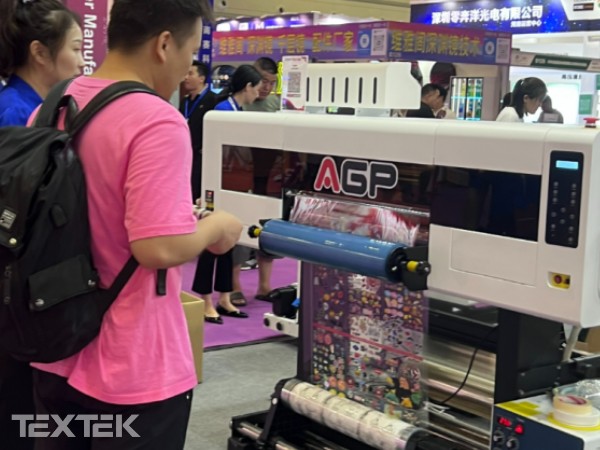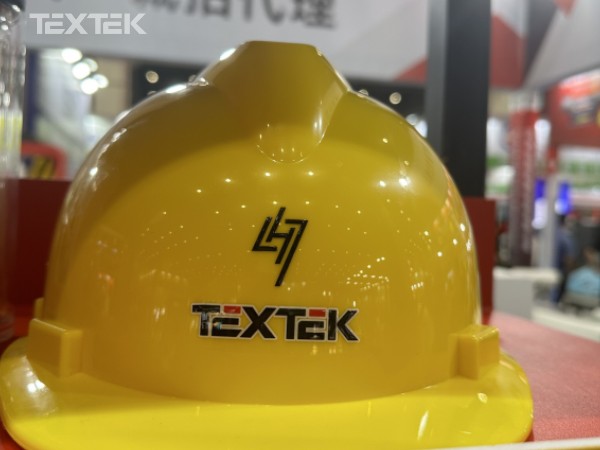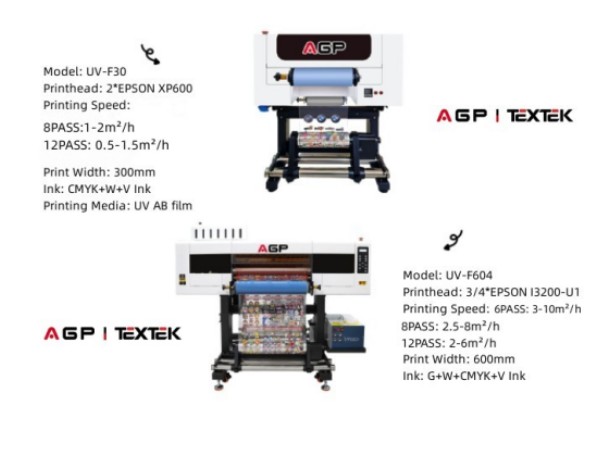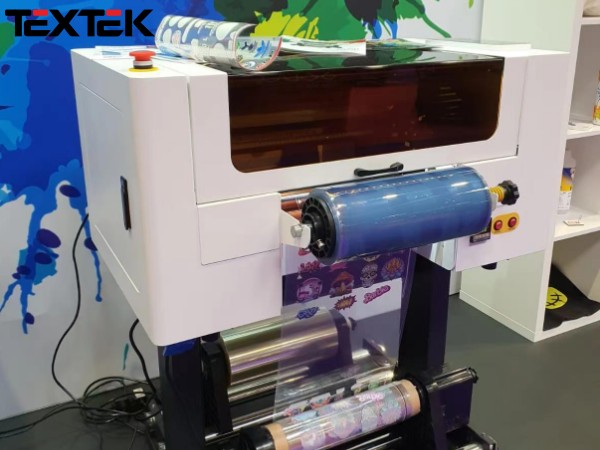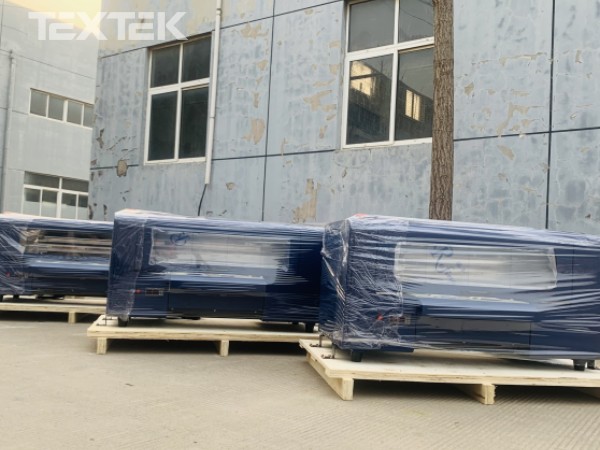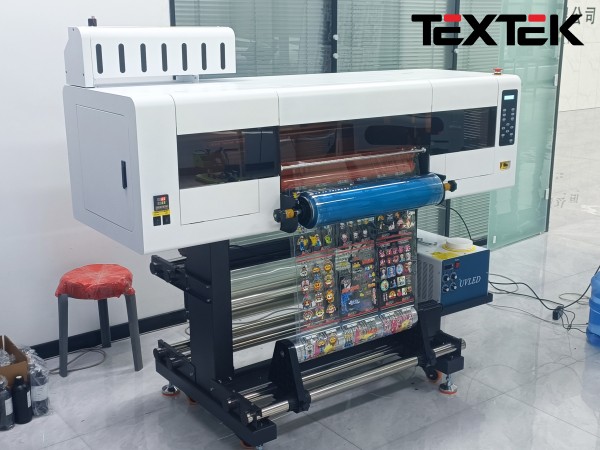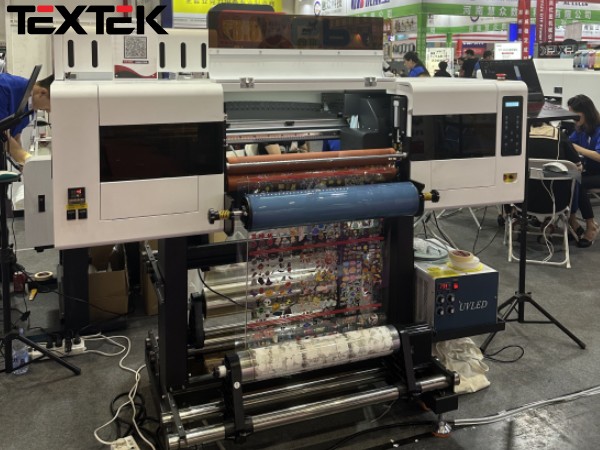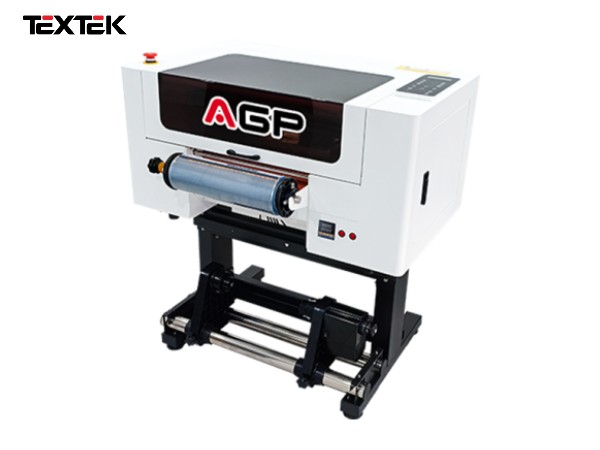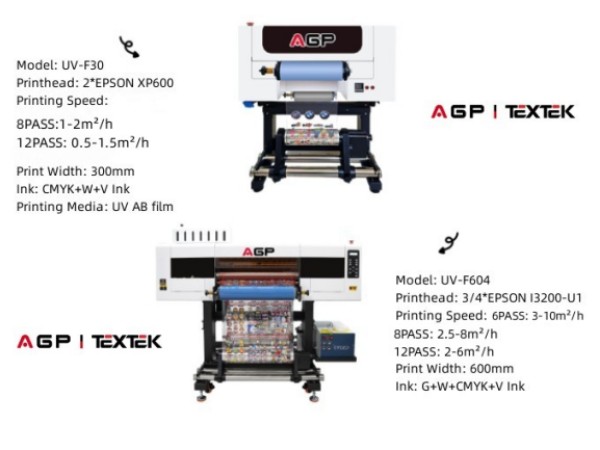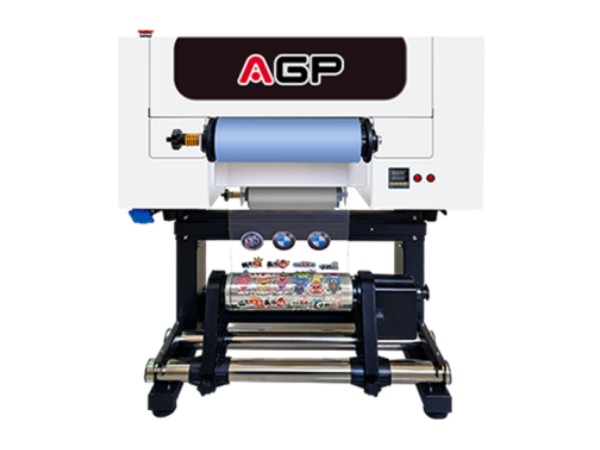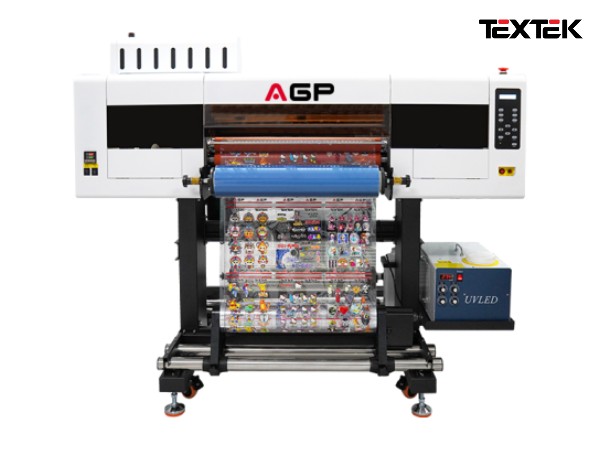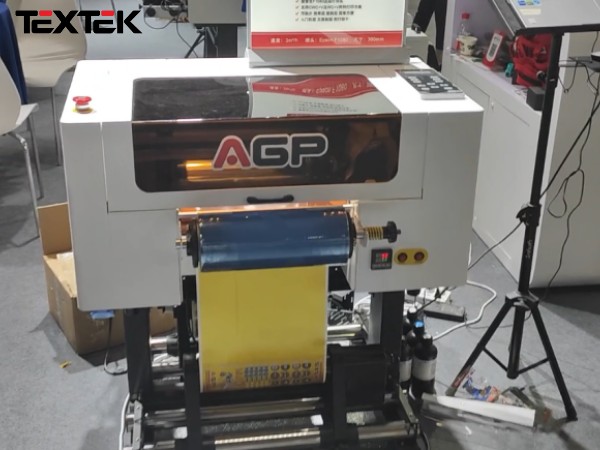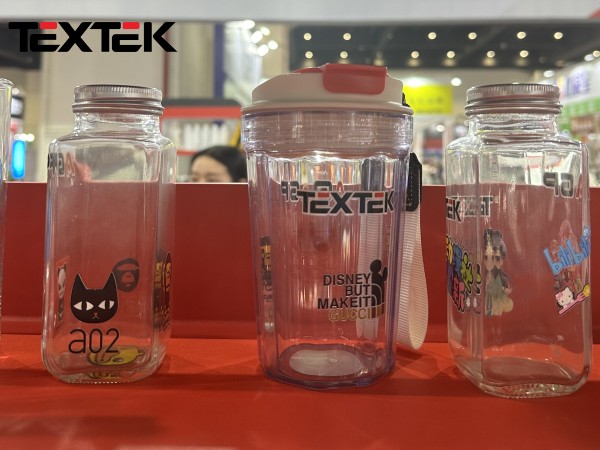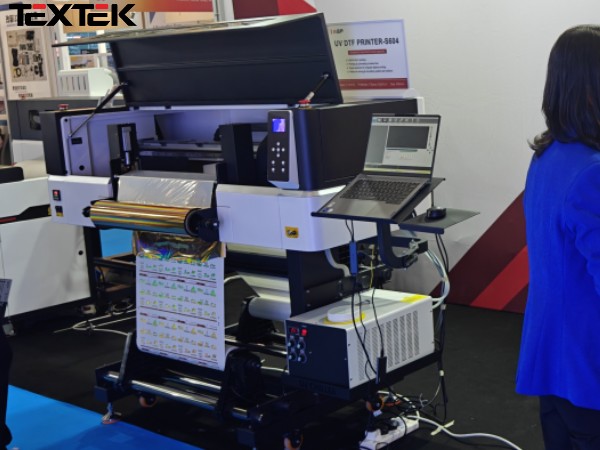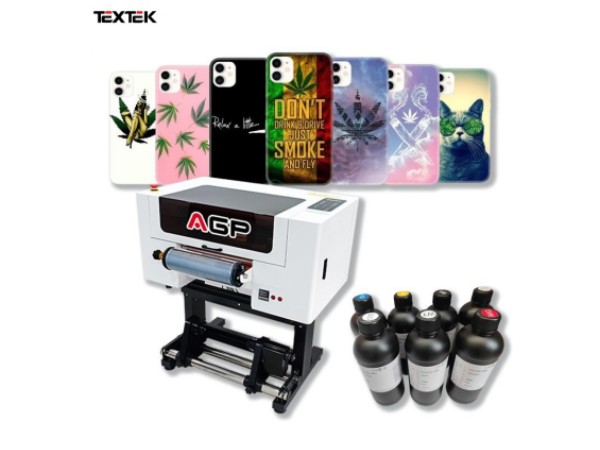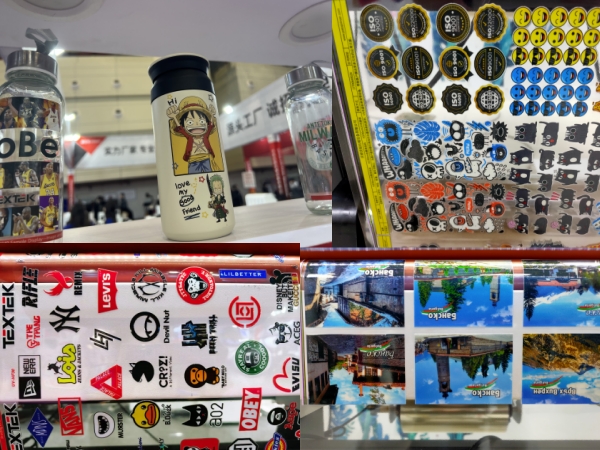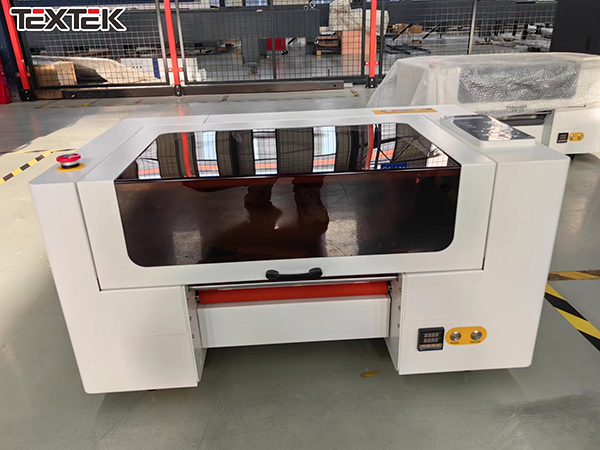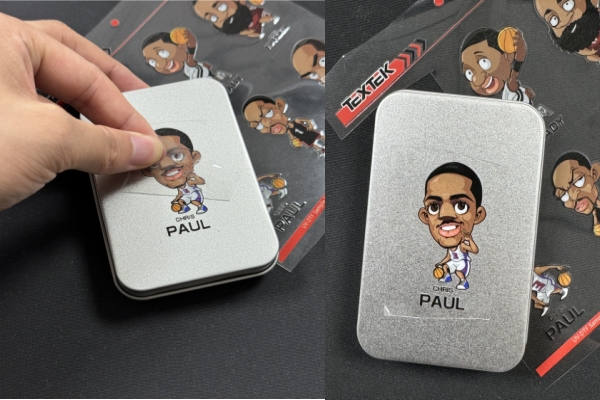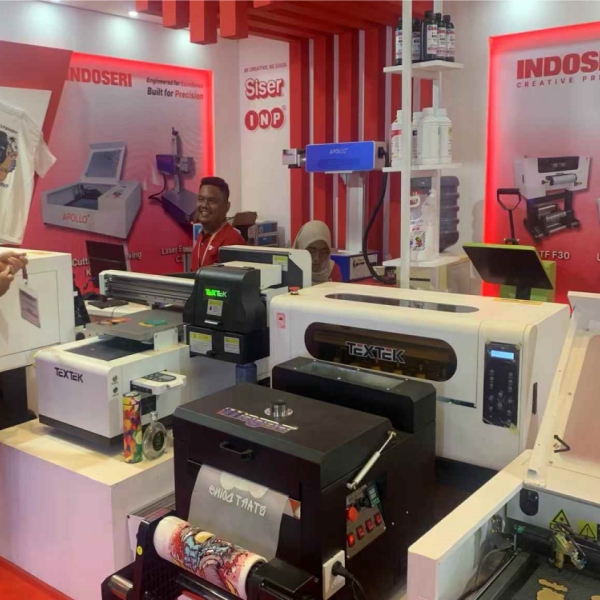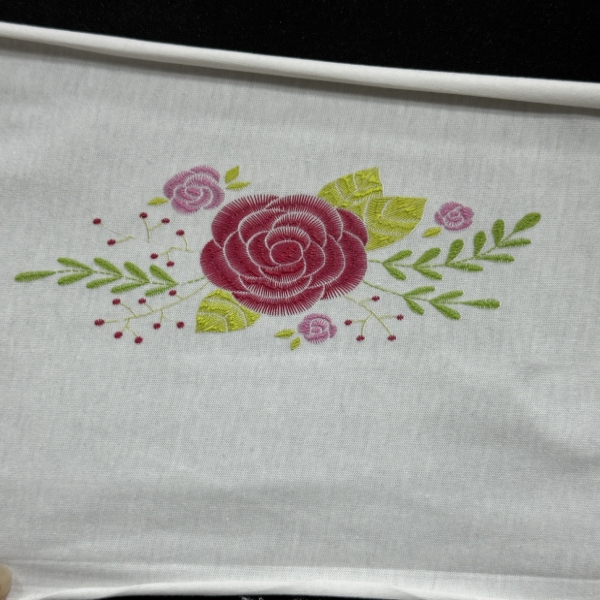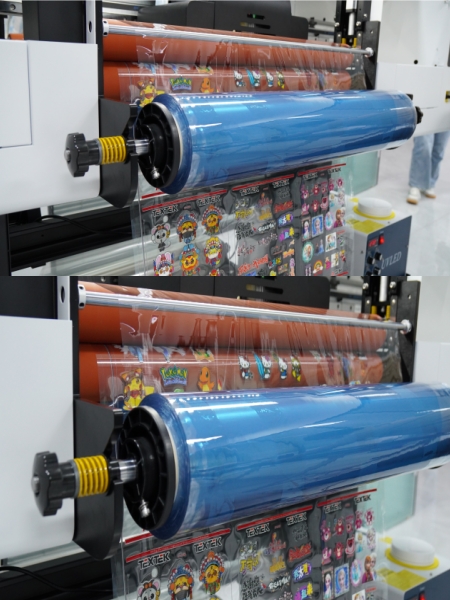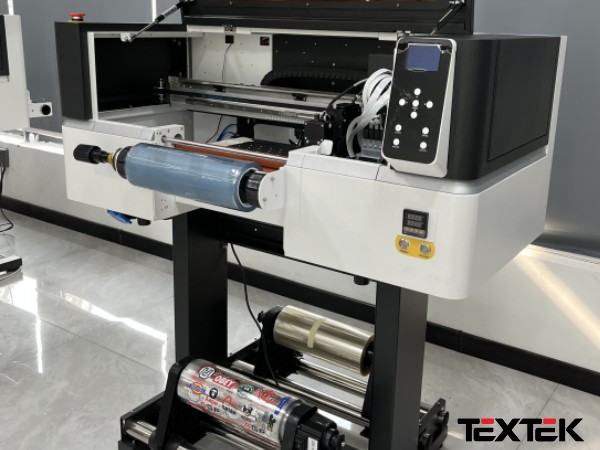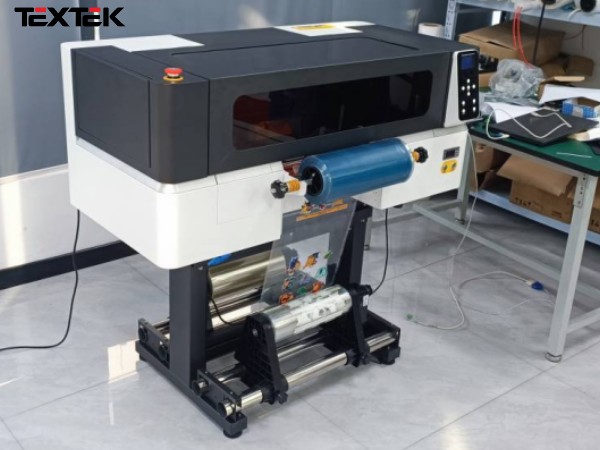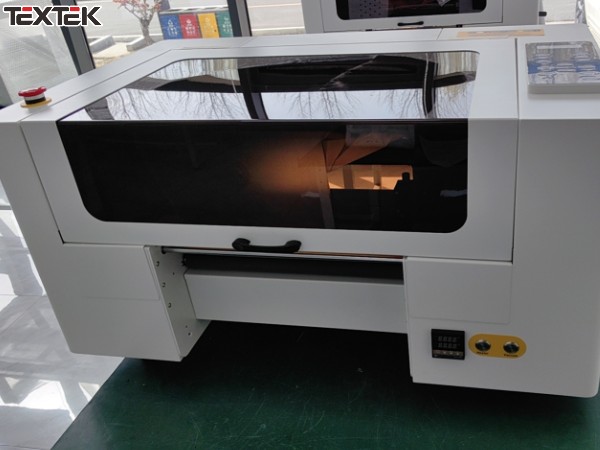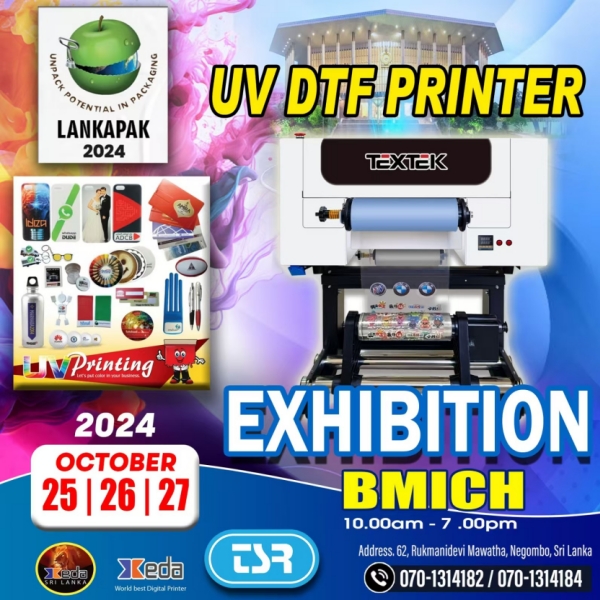UV direct printing, also known as UV flatbed printing, involves the use of UV flatbed printers to print an image directly onto a rigid or flat substrate. During the printing process, UV light immediately cures the ink, resulting in a durable, scratch-resistant and high-quality finish.
UV DTF printing is the latest development in the printing industry and involves the use of a UV DTF printer to print an image onto a release film. The image is then transferred to a variety of substrates using adhesives and heat. The method offers greater flexibility as it can be applied to a wider range of substrates, including curved and uneven surfaces.
Although there are similarities between the two types of printers, for example, UV printers and UV DTF printers both need to use ultraviolet heat for printing, but there are also certain differences.
1. Application Process
UV Direct Printing uses UV flatbed printers to print images directly onto the substrate. It is an efficient process that works well with flat, rigid surfaces, as well as round products such as mug and bottle.
UV DTF Printing involves printing the image onto a thin adhesive film, which is then applied to the substrate. This process is more versatile and suitable for curved or uneven surfaces.
2. Material compatibility
While both methods can be used on a variety of materials, UV direct printing is best suited for printing on rigid or flat substrates. However, UV DTF printing is more versatile and can be applied to a wider range of substrates, including curved and uneven surfaces.
For UV direct printing, some substrates such as glass, metal and acrylic may require a primer to enhance adhesion. In contrast, UV DTF printing does not require a primer, allowing for more consistent adhesion on different materials. It is worth noting that neither method is suitable for textile printing.
3. Speed
UV DTF printing is generally faster than UV direct printing, especially when printing small logos on items such as mugs or bottles. The roll-to-roll nature of UV DTF printers allows for continuous printing, increasing efficiency compared to piece-by-piece printing of UV flatbed printers.
4. Visual Effect
UV Direct Printing offers greater flexibility in terms of visual effects, such as embossing and varnishing. It does not always require varnish, whereas UV DTF Printing must use varnish.
UV DTF Printing can achieve gold metallic prints when using gold film, adding to its visual appeal.
5. Durability
UV direct printing is more durable than UV DTF printing, which relies on a less abrasion-resistant adhesive film. However, UV DTF printing offers more consistent durability on a variety of materials because it does not require priming.
6. Flexibility
UV DTF printing is more flexible, and the printed stickers can be stored for a long time and used when needed. On the other hand, UV direct printing can only produce printed matter after printing, which limits its flexibility.
After understanding the differences, let’s take a look at who can win the top spot between Crystal stickers and Traditional stickers? I believe you will have a clearer answer after reading it.
What’s the charm of Crystal sticker?
How exactly is it different from traditional sticker?
1. The difference in process
The traditional sticker process has many and cumbersome steps, and a small sticker needs 7 steps to complete, which requires a lot of labor and time to produce.
Step1
Design the printing film and printing version, prepare the main materials and auxiliary materials and mix the adhesive and printing ink beforehand.
Step2
Apply release silicone oil on the surface of high-density material.
Step3
Print the prepared adhesive
Step4
Printing of formulated protective primer
Step5
Printing the formulated ink of each color
Step6
Printing UV protective varnish, drying and curing by UV light.
Step7
Coat with high viscosity protective film, and finally cut the finished product.
In contrast, the process of crystal stickers is simpler and easier to use.
No need for plate making, no need for waste discharge, just confirm the pattern and start production. The UV DTF printer can be started with one button. There is no need for manual operation during the process, and an A3-sized sample can be printed after waiting for a few minutes. Moreover, the UV DTF printer is small in size and occupies a small area. This new machine just makes up for the market vacancy in the advertising industry for fast and convenient printing.
2. The difference in effect
The traditional sticker process is limited by the process, the color is dull, not waterproof easy to lose color, does not support the printing of special complex styles.
Crystal stickers support new technologies such as embossing, varnish, and complex pattern printing. They have a strong three-dimensional effect and are beautiful and atmospheric. Sticking to the surface of objects can increase the overall aesthetics. The finished product has a good release effect, is easy to re-post, does not fade, and is scratch-resistant and wear-resistant.
3. The difference in the number of MOQ
Because traditional sticker requires plate making and mold opening, it generally has higher requirements for the number of MOQ printings, and is suitable for manufacturers with large-volume needs.
The crystal sticker has no MOQ limit, one sheet can be printed, and it can be printed as you want, which is more suitable for the public.
From the above three differences, it can be seen that the crystal sticker is an upgraded version of the traditional sticker process, which fills the previous market needs for the convenience, timeliness of manufacturing and good experience of the sticker market.
Following the market development trend, TEXTEK launched the AGP series UV DTF printer: UV-F30 and UV-F60.
30cm/60cm two kinds of printing width are optional, the machine is equipped with Epson genuine print head, selects brand high-quality parts, configures a variety of humanized functions, supports two printing schemes: AB film and glue direct printing. The produced crystal stickers are bright in color, high in reduction, strong in adhesion, scratch-resistant and wear-resistant, have a strong three-dimensional surface, and leave no residual glue, and have been recognized by many new and old customers.
High-quality machines, customers in need are welcome to send inquiry!
